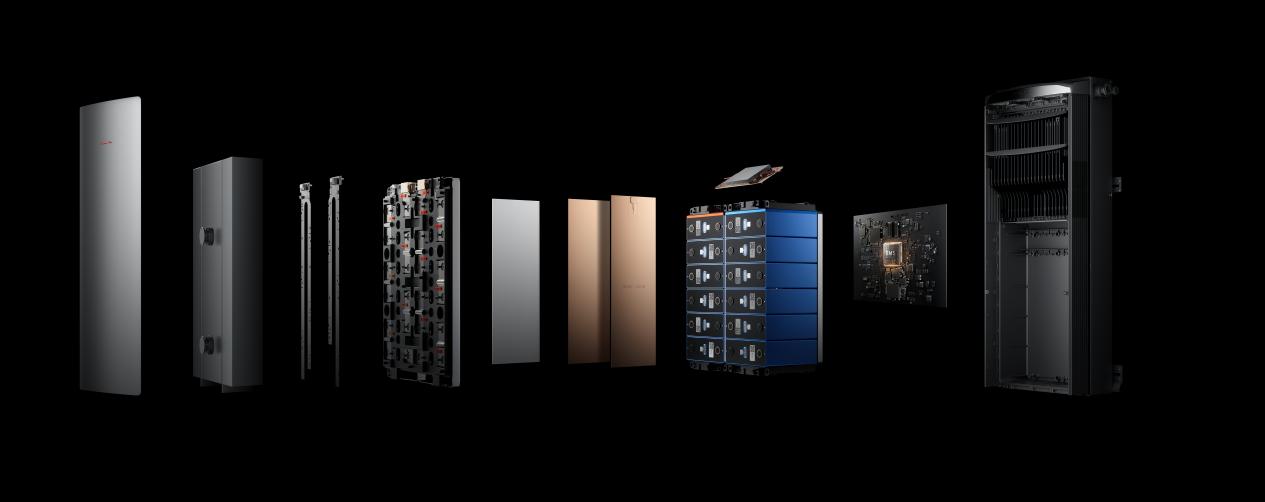Different Types of Electrical Panels Explained for Whole Home Batteries
- Which Types of Electrical Panel Should US Homes Consider First
- How Does a Main Breaker vs. Main Lug Electrical Panel Board Change Your Design
- Which Electrical Panel Is Best for Whole Home Battery Backup
- How Does a Smart Electrical Panel Optimize Backup and Bills
- Where Does a Transfer Switch or ATS Fit With Your Electricity Panel
- When Should You Add Subpanels, Meter Main Combos, or Outdoor NEMA 3R Electrical Panels
- How Do Electrical Panel Upgrades Speed Up Permits and Inspections
- Plan Your Electrical Panel and Battery
- 5 FAQs About Smart Electrical Panels and Whole-Home Battery Setup
A large whole-home battery only performs well when the electrical panel plan is clear. This guide maps the practical types of electrical panels, shows how each choice affects runtime and comfort, and explains where a smart electrical panel board helps US homes save money and pass inspections with less friction.
Which Types of Electrical Panel Should US Homes Consider First
A quick overview helps you match the electrical panel to battery goals, space, and code.
Panel type | When it fits | Battery fit |
Main breaker panel | Service entrance with a single disconnect | Central hub for storage and solar |
Main lug panel or subpanel | Extra spaces near EV, garage, ADU | Shorter runs and room to expand |
Meter main combo | Service outdoors or tight interiors | Clean retrofit layout |
Transfer switch or ATS | Source selection for backup | Unattended changeover |
Smart electrical panel | Circuit rules, data, schedules | Best for priorities and bill savings |
Outdoor NEMA 3R panel | Exterior walls or pedestals | Weather-ready service gear |
For most US homes, use a main breaker or a smart electrical panel as the hub, add a subpanel where big loads cluster, and use a transfer switch or ATS for safe backup switching.
Quick decision path for your electrical panel
Confirm service size and the main disconnect location with a licensed electrician.
Choose a main breaker replacement, a critical-loads subpanel, or a smart electrical panel based on backup goals.
Map circuit priorities for outage mode and for bill-saving mode before any wiring begins.
How Does a Main Breaker vs. Main Lug Electrical Panel Board Change Your Design
A main breaker electrical panel board includes a single service disconnect for the home. A main lug panel has no main breaker and typically serves as a subpanel fed from upstream protection. With a battery system, keep the service disconnect where inspectors expect it, then place subpanels near large loads such as HVAC or EV charging to reduce voltage drop and leave space in the primary electricity panel for future circuits.Choosing the home battery backup system bases on your budget, power needs, and desired level of automatio.
Which Electrical Panel Is Best for Whole Home Battery Backup
You have three common routes for backup behavior in a US home.
Whole-home battery backup routes at a glance
Manual transfer switch with the existing electrical panel for a small set of essential circuits.
Automatic transfer switch with the main electrical panel for unattended changeover across selected loads.
Smart electrical panel with circuit-level control for priorities, shedding, and time-of-use shifting.
An ATS senses a loss of grid and shifts to backup without human action, which protects equipment that must stay on. A smart electricity panel adds per-circuit rules and usage data, so you stretch runtime during long outages and avoid waste during peak pricing. For full-home backup with longer runtime and simple control, a smart electrical panel with ATS logic is the best fit; for a few essential circuits, a manual switch or a basic ATS is enough.
How Does a Smart Electrical Panel Optimize Backup and Bills
A smart electrical panel adds fine-grained control to a whole-home battery. It automates circuit priorities, aligns usage with rate windows, and gives clear visibility across the system. In practice, you want a fast transfer of near 10 milliseconds, plenty of smart circuits, a NEMA 3R cabinet for indoor or outdoor placement, listings UL certify(UL67, UL916, UL869A, and UL1741), split phase at 120/240 V, and a standby generator input.
EcoFlow integrates these ideas well. The EcoFlow OCEAN Smart Electrical Panel 40 supports up to forty smart circuits and ultra-fast switchover, and it pairs cleanly with EcoFlow OCEAN Pro for high output and large solar intake. EcoFlow OCEAN Pro delivers up to 24 kW continuous power, accepts up to 40 kW of PV input, and storage scales from 10 kWh to 80 kWh. This combination keeps HVAC comfortable, preserves cold storage, and lets you schedule heavy loads for off-peak hours in one app.
What to look for in a smart electricity panel
Circuit scheduling for off-peak charging and pre-cooling
Priority groups with automatic shedding during long outages
Native generator sensing plus seamless source selection
App visibility with local controls that continue offline
Example circuit priorities for outage mode
Priority 1 HVAC, networking, refrigerator, essential lighting
Priority 2 kitchen outlets, garage door, bedroom lighting
Priority 3 washer, dryer, pool pump, non-critical receptacles


Where Does a Transfer Switch or ATS Fit With Your Electricity Panel
It sits between the utility service and your main electrical panel to select the active source safely. A transfer switch connects your home to a backup source when the utility fails. Manual versions suit small critical-load plans and hands-on operation. An ATS monitors the utility and switches to backup automatically, which protects sump pumps and similar loads. If you also want cost control and flexible priorities, place an ATS inside a smart electricity panel strategy or adopt a smart electrical panel that handles both switching and circuit rules.
When Should You Add Subpanels, Meter Main Combos, or Outdoor NEMA 3R Electrical Panels
Add them when large loads are far from the main panel, when code places the service outdoors, or when weather exposure requires a NEMA 3R enclosure. Subpanels near large loads shrink wire runs and organize circuits for EV charging or a workshop. Meter main combos serve locations where code or layout demands a service disconnect near the meter outside. Outdoor work often uses a NEMA 3R electrical panel, which adds rain and ice protection for safe operation. These choices de-clutter the primary electrical panel board and reduce rework during inspections.
Specialty electrical panel boards you might add
- EV subpanel near the charger for shorter continuous-load runs
- Spa or hot-tub GFCI panel for outdoor wet locations
- RV pedestal with dedicated receptacles and labeling
- Temporary power panel for construction or events
- Generator-ready inlet with an interlock kit where allowed


How Do Electrical Panel Upgrades Speed Up Permits and Inspections
Upgrades move faster when drawings, labels, and UL listings match exactly what the inspector sees on site. Clear paperwork and clean wiring save days. Use NEC Article 408 as the reference for panelboards, then check enclosure type, labeling, and protection devices. A smart electrical panel board that lists the right UL standards often streamlines approvals because the scope is obvious.
Inspection checklist
Clear circuit labeling that matches drawings and load calculations
Correct AFCI and GFCI protection per circuit and location
Proper grounding and bonding with verified conductor sizes
Service disconnect placement and working clearance per code
NEMA 3R enclosure and drip-edge details for outdoor installs
Plan Your Electrical Panel and Battery
If the goal is long outage resilience with predictable bills, a smart electrical panel gives you circuit priorities, instant backup, and actionable data. The EcoFlow OCEAN Smart Electrical Panel 40 works smoothly with EcoFlow OCEAN Pro to deliver high output, generous solar intake, and storage that grows with your home. Speak with a licensed electrician, confirm service size and panel location, then lock in the electrical panel layout so your storage performs from day one and scales cleanly over time.
5 FAQs About Smart Electrical Panels and Whole-Home Battery Setup
Q1. Will a 100A service suffice to support a whole-house battery and a smart electrical panel?
A 100A service will function when the various loads and continuous loads are within the inverter limits from the load audit. Have a smart electrical board control additional circuits and operate large appliances. Inspectors may still require a 200A upgrade if nameplate ratings are greater than what the service can accommodate or if an electric vehicle load is added in the future.
Q2. How do you handle neutral and ground wires when installing subpanels?
Keep neutral wires and ground wires apart in subpanels, and join them only at the main disconnect. Exercise caution when you are working with multi-wire branch circuits and place common neutral wires on two-pole breakers with a common trip. Label bars accurately. This prevents current from flowing improperly and guards against fault paths of breakers and GFCI/AFCI devices.
Q3. Does a new electric panel accept used breakers?
Only if they are listed and marked for that panel type, most companies restrict cross-compatibility. Combining comparable breakers will lead to overheating and cause an inspection failure. For vintage tandem breakers, inspect the new panel’s circuit acceptance type. If you are not sure, use matched breakers to maintain the electrical panel board listing and warranty.
Q4. Which regulatory guidelines enhance the battery and inverter's performance closer to the panel?
Locate the battery and inverter close to the electrical panel. This will reduce wire length and minimize voltage drop. Obey safety spacings, avoid direct sunlight and damp spaces, and provide airflow. Smooth conduit runs with slight curves. Do not store flammable or corrosive items in common rooms. Ensure that items are securely anchored in areas where there may be earthquakes.
Q5. How do I write my project so that permit and utility approval will occur sooner?
Collect a one-line diagram, load calculations, equipment data sheets, and a labeling plan. Add service size, grounding method, and connection notes. Add the listings for the smart electrical panel and the commissioning steps. Coordinate early with the utility to check on metering requirements. Good, complete paperwork makes back-and-forth less necessary and keeps inspection time brief.